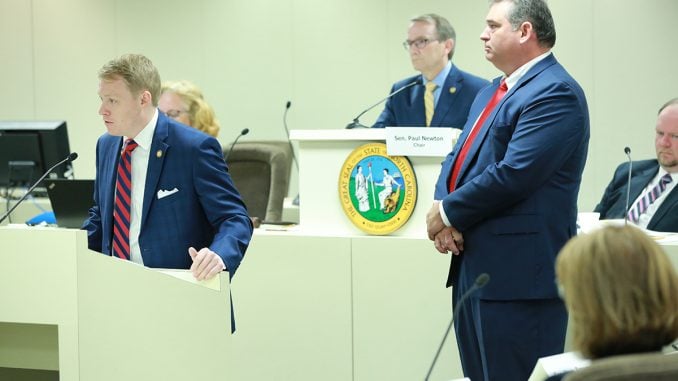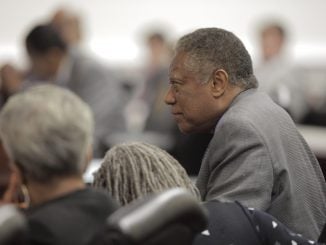
RALEIGH — Facing a deadline this week, the North Carolina legislature stayed on track to enact replacement districts for dozens of its seats on time.
Showing bipartisan support, the full Senate voted 38-9 on Monday evening for new chamber districts in 20 of the state’s 100 counties, most in the state’s urban centers. The House already approved a new map late last week that reworked boundaries in 28 counties.
Both sets of maps must be approved by both chambers by Wednesday to comply with a state court ruling that declared 2017 boundaries violated the state constitution. A three-judge panel ruled Sept. 3 that Republicans improperly used partisanship to draw state legislative districts.

Earlier Monday, many of the more than 50 speakers at a joint House-Senate public hearing about the proposed district lines said the process has improved over the past but remained split on whether the replacement maps are any better than the old gerrymandered ones.
“You are participating in the most transparent redistricting process in the history of our state,” said Sen. Warren Daniel, a Burke County Republican and Senate redistricting panel co-chairman.
That sentiment was echoed by Sen. Dan Blue who said the maps were the result of the “most transparent redistricting process in history.”
But it was the judges who mandated transparency after evidence that the Republican’s now-deceased mapmaking consultant drew most of the 2017 districts several weeks before lawmakers met to discuss and vote on them.
That openness, the judges wrote, required “all map drawing to occur at public hearings, with any relevant computer screen visible to legislators and public observers.” The redistricting committee meetings and desktop screens were livestreamed.
Even some Democratic senators critical of Republican redistricting this decade said during floor debate they were pleased with how the chamber reached consensus.
“Your decisions were defensible. You did appear to me to be acting in good faith and that’s remarkable … and you deserve recognition for that,” said Sen. Jeff Jackson, a Mecklenburg County Democrat. Although Jackson still voted against the Senate plan — citing longstanding support for creating an outside commission to draw maps — 13 of the chamber’s 21 Democrats voted yes.
Some public hearing speakers said the process was still hard to follow. Committee meetings last week sometimes were delayed for hours, and more public hearings were needed.
The judges said GOP mapmakers couldn’t use partisan data or past election results — a key indicator of electoral performance — in fashioning maps in the latest round of redistricting.
The committees instead decided to use districts created by an expert for plaintiffs who successfully sued over the 2017 lines as the basis for their work. The judges gave the district maps from University of Michigan professor Jowei Chen great weight in their ruling.
Some Democrats said Chen’s maps were never created to be used as actual districts. And some of Monday’s speakers said they were tainted when House and Senate members agreed to tweak them to ensure pairs of current incumbents aren’t living in the same districts. That would require them to run against each other in the 2020 elections.
The judges said incumbency protection could be considered if drawing the maps. Renee Sekel of Cary told lawmakers they were still violating the spirit of the judges’ directive. She also noted that the incumbents were elected under maps found to be unlawful this decade.
“You’re choosing to protect incumbents who court after court after court has told you are not illegally elected,” Sekel said. “You need to stop it. That’s as simple as it can be.”
Other hearing participants tried to pitch last-minute changes to House districts. Some complained that the cities of High Point and Concord were split between districts. Several Columbus County leaders and residents asked to reverse changes to a district that crosses into Robeson County.
House Republicans have said it’s possible the map approved by the chamber last Friday could be altered in the Senate.
The enacted plans will be forwarded to the three-judge panel, which has chosen a third-party expert to review the districts and redraw them if the judges believe the replacement maps don’t meet their standards. The final maps would be used next year only, because the next round of redistricting begins in 2021.
Senate Leader Phil Berger (R-Eden), in a statement, said the process used by the General Assembly “could be used as a national model.” Berger added, “Every effort has been made to create fair, nonpartisan, and court-compliant districts. We urge the court to accept these districts so we can finally put this long battle behind us.”



